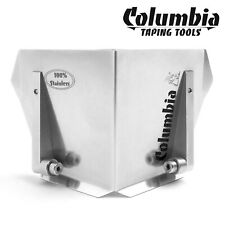Sanding Drywall with a Power Sander: A Comprehensive Guide
When it comes to finishing drywall, sanding is a crucial step that ensures a smooth, even surface. Using a power sander can significantly speed up the process and improve the quality of your work. In this guide, we’ll explore the different types of power sanders, the best practices for sanding drywall, and the essential safety precautions to keep in mind.
Types of Power Sanders

There are several types of power sanders available for drywall sanding, each with its own advantages and disadvantages:
| Power Sander Type | Description | Advantages | Disadvantages |
|---|---|---|---|
| Handheld Sanders | Compact and easy to maneuver, these sanders are great for small areas and corners. | Easy to control, lightweight, and portable. | Limited sanding area, may not be as effective on larger surfaces. |
| Edge Sanders | Designed for sanding along walls and corners, these sanders are essential for achieving a smooth finish. | Perfect for tight spaces, easy to use, and provides a consistent finish. | Not suitable for large areas, may require additional sanders for larger projects. |
| Detail Sanders | Small, handheld sanders with a narrow sanding surface, ideal for sanding intricate details and small areas. | Great for fine details, easy to control, and compact. | Not suitable for large areas, may require additional sanders for larger projects. |
| Variable-Speed Sanders | These sanders allow you to adjust the speed, making them versatile for various sanding tasks. | Adjustable speed for different materials and surfaces, versatile, and easy to control. | May be more expensive than other types of sanders. |
Best Practices for Sanding Drywall

Follow these best practices to ensure a smooth, even finish when sanding drywall:
- Choose the Right Sandpaper: Use a medium-grit sandpaper (80-120 grit) for the initial sanding and switch to a finer grit (180-220 grit) for the final sanding.
- Start with a Handheld Sander: Use a handheld sander to cover larger areas and smooth out the surface.
- Use an Edge Sander for Corners: An edge sander is essential for sanding along walls and corners.
- Work in Small Sections: Sand small sections at a time to ensure even coverage and avoid sanding over the same area multiple times.
- Keep the Sander Moving: Avoid pressing too hard on the sander, as this can cause scratches and uneven sanding.
- Check for High Spots: Use a damp rag to check for high spots and sand them down until the surface is smooth.
- Clean the Surface: After sanding, clean the surface with a damp cloth to remove any dust and debris.
Safety Precautions

When using a power sander, it’s crucial to take the necessary safety precautions to avoid accidents and ensure a safe working environment:
- Wear Safety Glasses: Protect your eyes from dust and debris that may be kicked up during sanding.
- Use Hearing Protection: Power sanders can be loud, so use hearing protection to prevent hearing damage.
- Secure the Drywall: Use clamps or a level to secure the drywall in place to prevent it from moving while sanding.
- Unplug the Sander: Always unplug the sander when not in use to prevent accidents.
- Keep the Workspace Clean: Keep the workspace clean and free of debris to prevent tripping hazards












